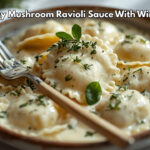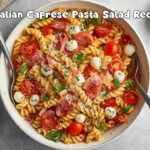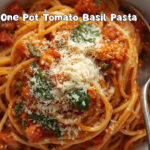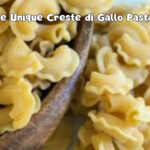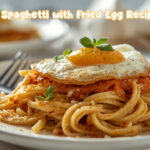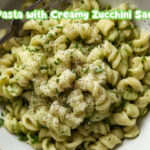Table of Contents
ToggleWhen you’re preparing a recipe that calls for Emmental and you don’t have it on hand, don’t worry—I’m here to help. Finding the right Emmental cheese substitute is easier than you think. The secret lies in understanding what makes Emmental unique and then picking a cheese that matches its texture, flavor, or melting ability. So, in short, Gruyère is the best Emmental cheese substitute for melt and flavor. Fontina, Jarlsberg, Comté, and even plant-based Swiss-style cheeses also work well.
In this article, I’m going to share everything I’ve learned over the years about Emmental and its alternatives. I’ve had to replace Emmental many times in my own kitchen, and through experience (and lots of melted cheese!), I’ve discovered which substitutes work best in different types of dishes.
So, let’s start by first understanding Emmental itself—what makes it so special. Once we cover that, we’ll move on to the best alternatives and how to use them in real recipes.
What Exactly is Emmental Cheese?
Emmental cheese, also called Emmentaler, is a medium-hard yellow cheese that originally comes from the Emme Valley in Switzerland. It’s known around the world as the famous “cheese with holes,” but it’s much more than a cartoon image.
Emmental is a Swiss-type cheese, meaning it shares characteristics with other cheeses from Switzerland, including a nutty flavor and excellent melting properties.
What Does Emmental Taste Like?
The taste of Emmental is mild and slightly savory. It has a nutty flavor that’s smooth and not too sharp. I find that it works beautifully with sweet ingredients like apples, pears, or even honey. The flavor is subtle, so it doesn’t overpower other ingredients in your dish.
Aging Process – Holes, Flavor, and More
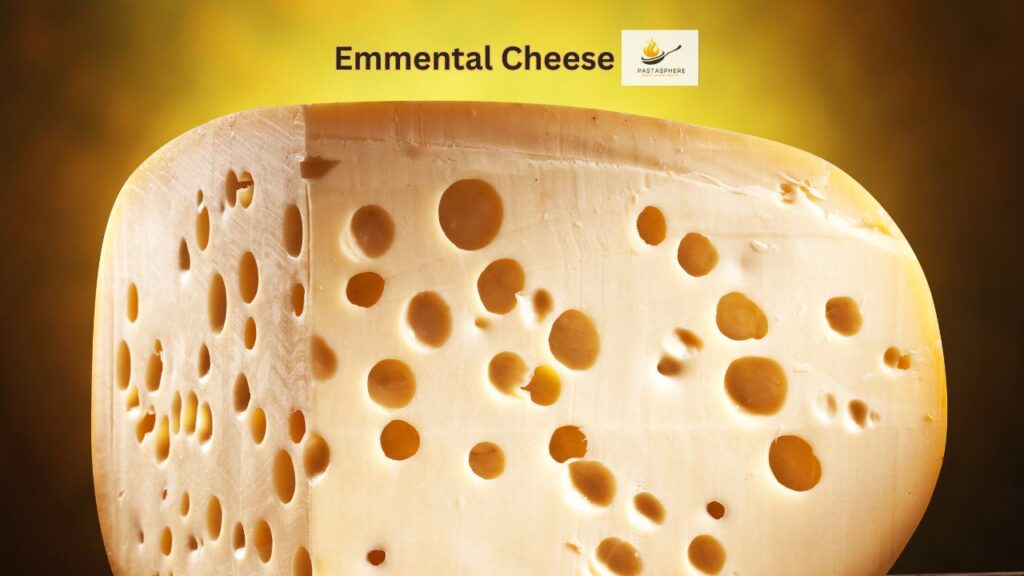
Let’s talk about those holes, also called eyes. They’re not defects—they’re actually formed by natural bacteria during aging process or fermentation. The cheese is made with three types of bacteria that release gas as they mature, causing those famous holes. Also, Emmental has a natural cheese rind and often comes in large wheels. Its unique texture, aroma, and appearance make it stand out.
How Emmental is Traditionally Used in Cooking
Now that we’ve covered the taste, let’s talk about how it’s used. Emmental is a very versatile cheese. You’ll see it used in:
- Swiss fondue (it’s a key ingredient)
- French gratins and casseroles
- Quiches and tarts
- Melted on burgers or sandwiches
- Cheese platters with fruits and nuts
Is Emmental a Melting Cheese?
Yes, absolutely. Emmental melts smoothly and evenly, which is why it’s so popular in hot dishes. I often use it in homemade mac and cheese or to top off baked potatoes. It’s creamy and consistent without becoming oily.
Where Does Emmental Cheese Come From?
As I mentioned earlier, Emmental cheese comes from the Emme Valley in Switzerland. Some versions are also made in parts of France. But for cheese to be labeled as Emmentaler AOP (Appellation d’Origine Protégée), it must come from specific regions and be made with traditional methods. These rules help maintain the cheese’s authenticity.
How Long Can Emmental Cheese Be Stored?
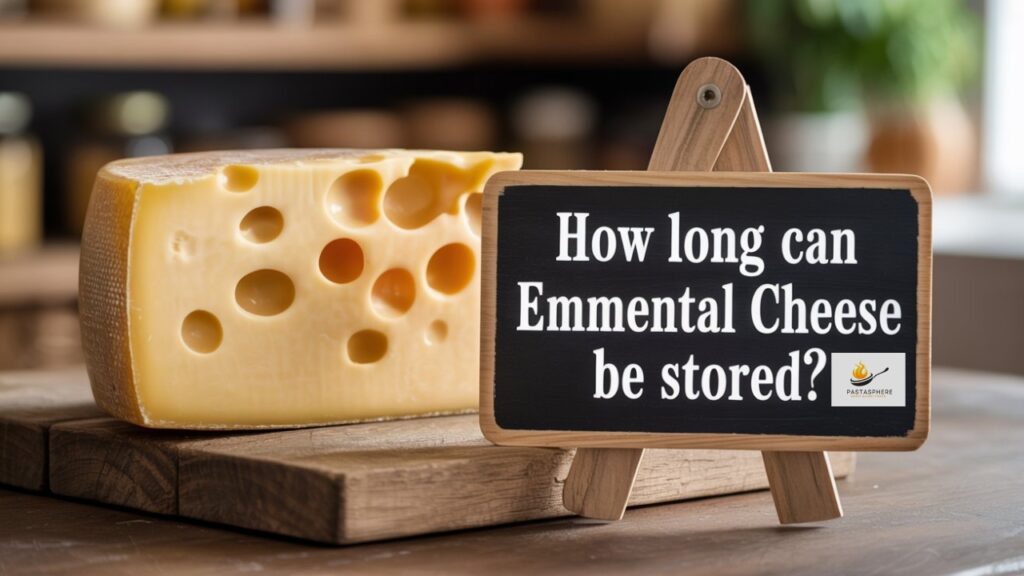
Storage matters a lot. When left unopened, Emmental cheese can usually stay fresh in the refrigerator for about 4 to 6 weeks, especially if it’s still in its original vacuum-sealed packaging. After opening, I make sure to wrap it carefully in wax paper or foil, then place it inside a sealed container or a zip-lock bag to keep out air and moisture.
This method helps preserve its texture and flavor. When stored this way, Emmental usually stays fresh for 1–2 weeks. Also, keep it in the vegetable crisper drawer or the coldest part of your fridge. Avoid freezing it, as freezing can change its texture and make it crumbly instead of smooth and sliceable.
The Top Emmental Cheese Substitutes
Choosing the right Emmental cheese substitute depends on what your recipe needs—melting, texture, or taste. Below are my top picks based on personal use and expert recommendations.
1. Gruyère
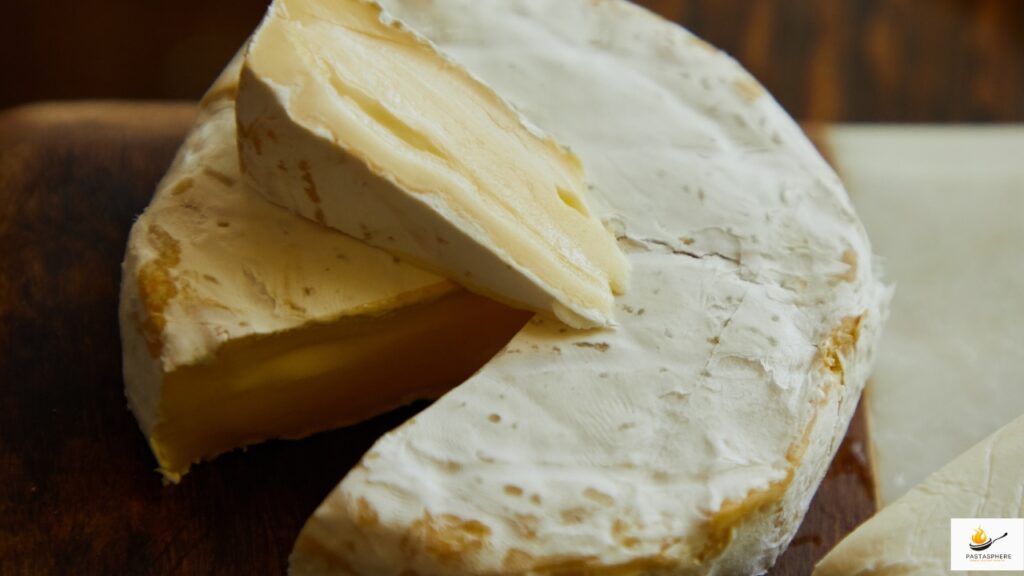
Let’s start with Gruyère, my top Emmental cheese substitute. It’s also a Swiss-type cheese, aged and flavorful, just like Emmentaler. Both cheeses are often used together in fondues and gratins. Gruyère melts perfectly and offers a stronger, savory taste, ideal for recipes that need a bit more depth. It also has a round shape and natural rind, common in traditional cheese makers’ products.
I also came across a Quora discussion on Emmental substitutes where several chefs recommend using Gruyère for its excellent meltability and bold flavor.
2. Jarlsberg
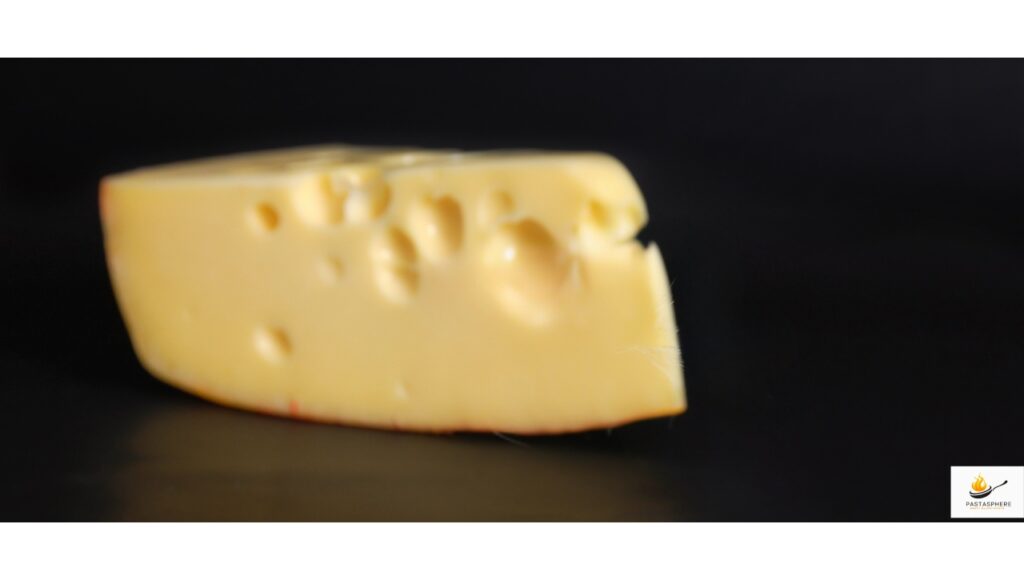
Jarlsberg, though from Norway, is often mistaken for Emmental because of its large eyes and mild taste. It has a slightly sweeter profile but still melts beautifully. It’s great for sandwiches, baking, or slicing in chunks. With its balanced texture and flavor, it’s a solid choice in modern times as a milder stand-in.
3. Swiss Cheese
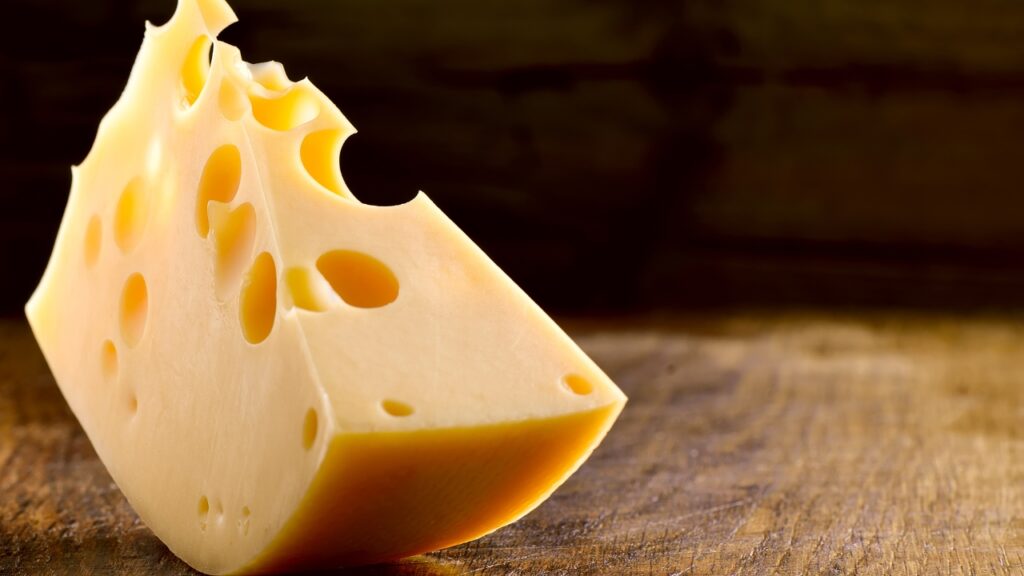
If you’re in the U.S. and looking for something quick, American Swiss cheese can work. While it doesn’t offer the same complex flavor, it’s convenient and melts well. It’s often used in slices for burgers or casseroles. Though not made traditionally, it still serves the purpose in everyday cooking.
Check out this Reddit thread on cheese swaps—many home cooks suggest Jarlsberg or store-bought Swiss as reliable stand-ins when Emmental isn’t available.
4. Parmesan Reggiano
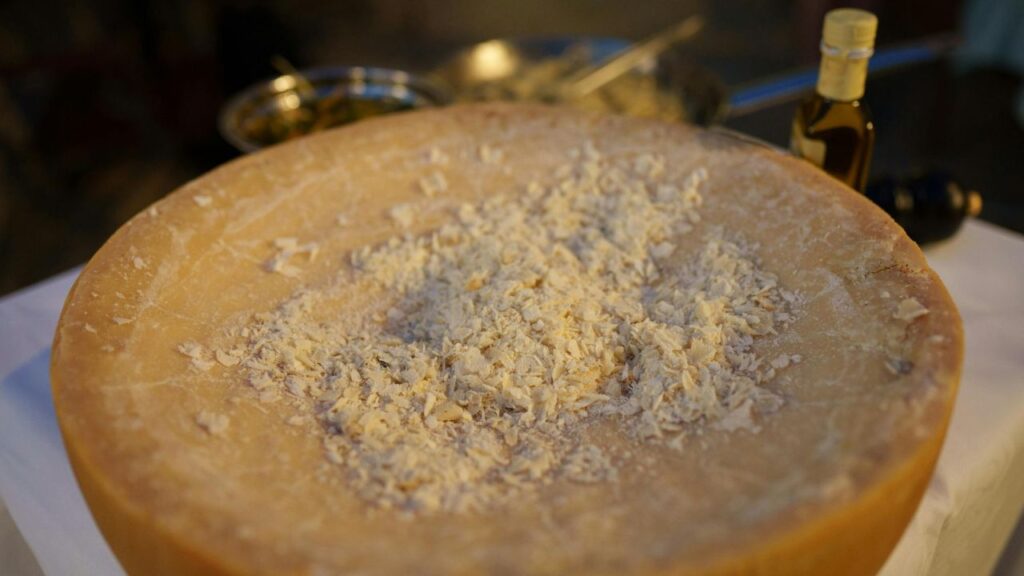
Parmesan is not a melting cheese like Emmental, but it’s rich and savory, making it perfect for grating over pasta or baked dishes. It’s classified differently, but its strong flavor can enhance a variety of dishes. I like using it to boost taste when I don’t need a gooey melt.
5. Fontina
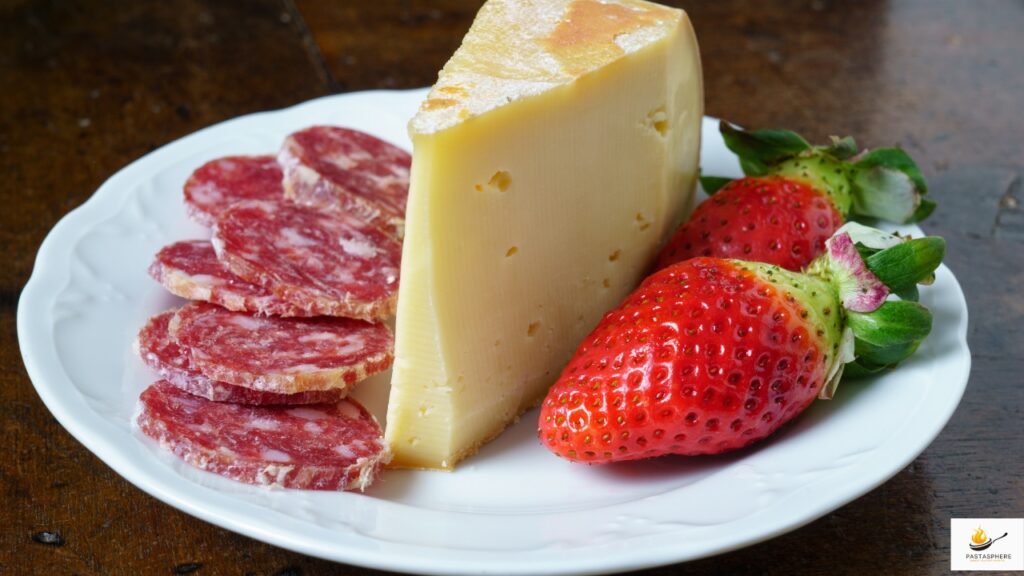
If you want something creamy with a medium-hard texture, go for Fontina. It melts smoothly and adds a rich finish to sauces and risottos. It’s not as nutty as Emmental, but still brings a mild taste that blends easily into many recipes.
6. Havarti
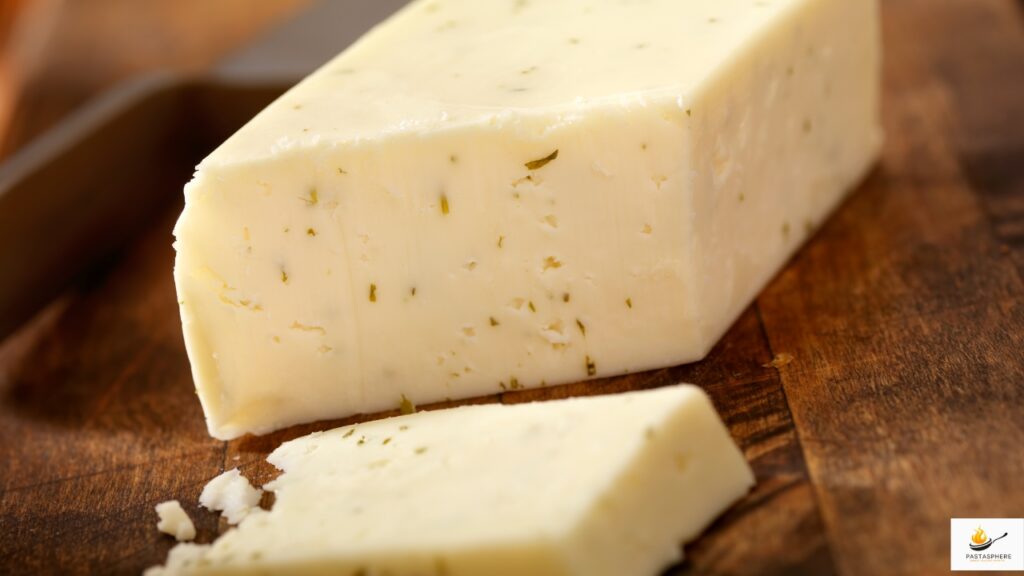
Havarti is a Danish cheese with a buttery texture and mild flavor. It melts very well, making it great for baked macaroni or grilled sandwiches. It’s softer than Emmental but still fits as a yellow, semi-soft option that works across many dishes.
7. Provolone
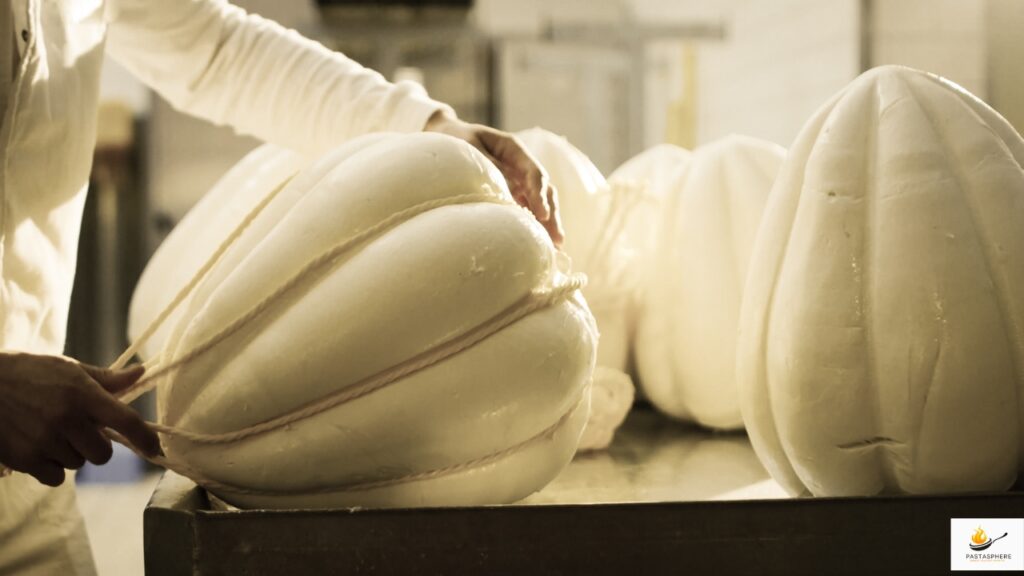
Provolone is a semi-hard cheese with more salt and a firmer bite. While it doesn’t have Emmental’s classic bacteria-formed eyes, it works great in layered recipes like lasagna. It’s better for slicing and layering than for fondue, but still very consumed in hot dishes.
8. Raclette
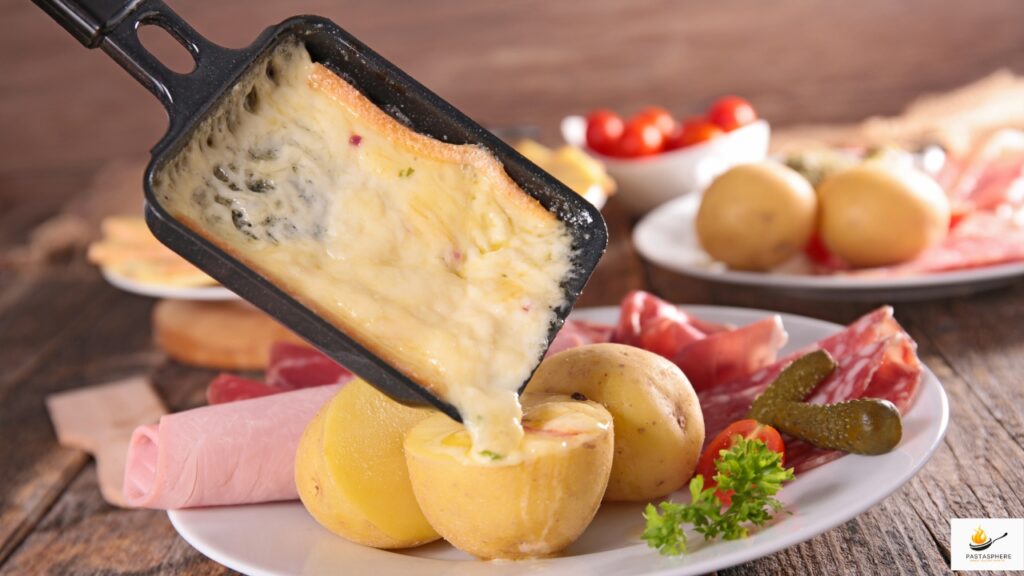
Planning to make fondue or raclette? Then go with Raclette cheese. Raclette is another Swiss-type cheese that originated in the Alpine region. Though not from the Emme Valley, it shares a history of traditional cheese-making. It has a strong aroma, melts smoothly, and is ideal for cheese boards or hot dishes. It’s more pungent but excellent for the same maturation-focused uses.
9. Edam
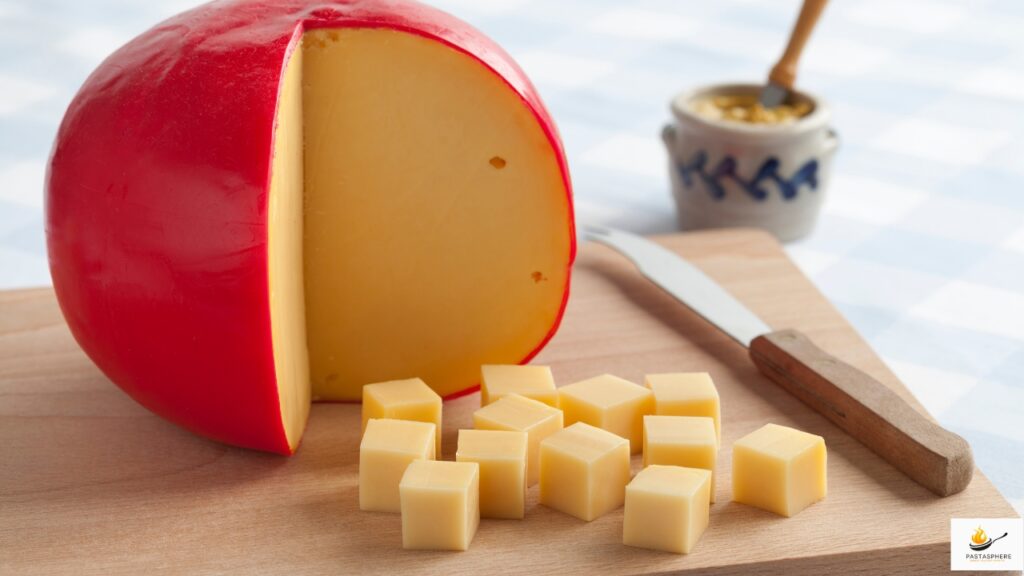
Edam is a Dutch cheese that’s slightly firmer than Emmental. It doesn’t melt quite the same way but adds a mild flavor to cheese plates or grated over vegetables. It’s commonly used in chunks or thin slices. A good emmental cheese substiute when you’re not focused on meltability.
10. Gouda
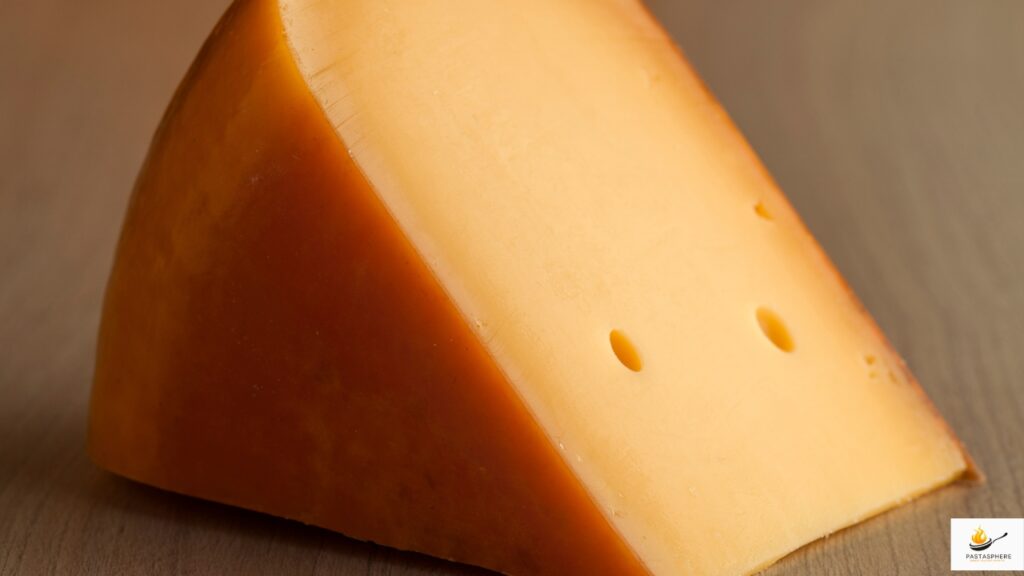
Gouda, depending on its age, can be soft and creamy or hard and nutty. Younger versions are closer to Emmental in texture, while aged types bring a savory punch. It’s also produced in a round shape, and the aged kind develops a natural rind. Both types are consumed worldwide in various dishes.
11. Mozzarella
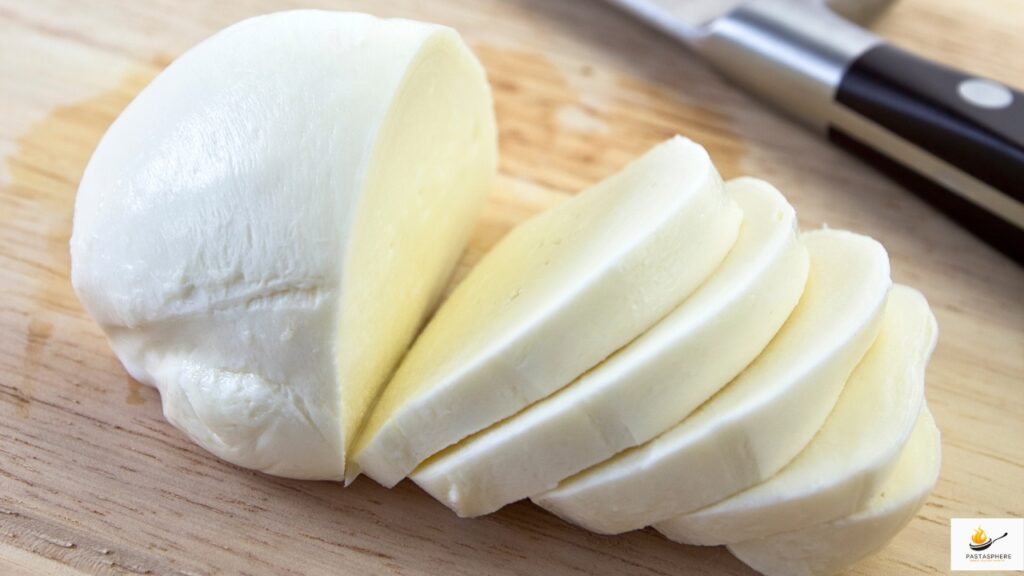
Need something that melts well but doesn’t care about flavor matching? Use Mozzarella. It’s budget-friendly and good for melting, but won’t add Emmental’s nutty notes. It’s soft, stretchy, and perfect for pizza or pasta. While it lacks Emmental’s origin and texture, its melting ability makes it useful in many recipes where taste matching isn’t critical.
12. Comté
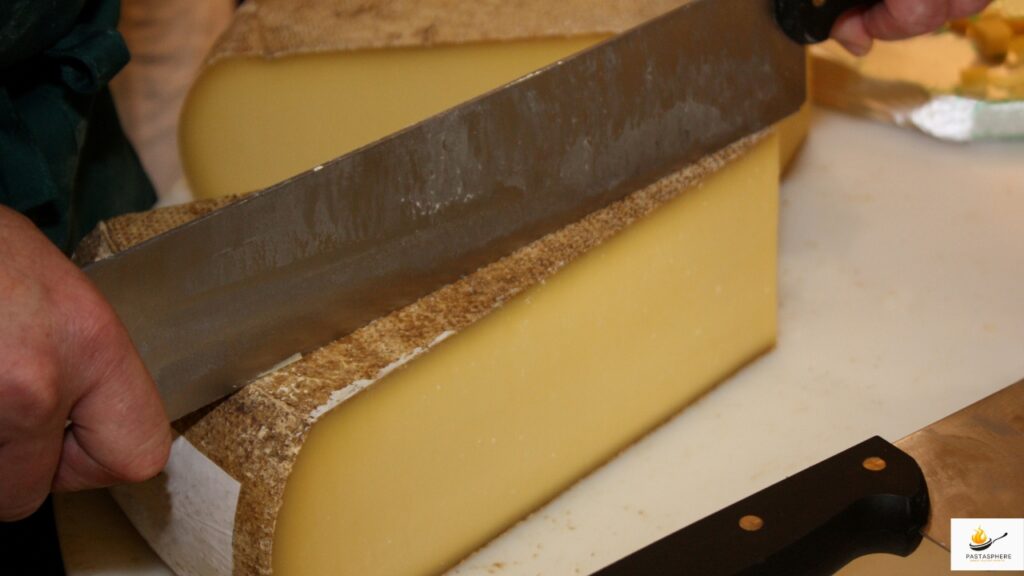
Finally, Comté, from France, is often seen as Emmental’s cousin. It’s aged longer and has a rich, nutty flavor that’s perfect for baked gratins and quiches. Like Emmental, it’s a registered geographical indication product, meaning only cheese from certain regions can be labeled as Comté. It uses three types of bacteria for fermentation and maturation, just like Emmentaler, and has high quality standards. I love it in quiches and baked gratin.
Plant-Based Substitutes for Emmental Cheese
Let’s not forget vegan options. There are some decent dairy-free alternatives if you’re avoiding animal products.
Vegan Cashew Cheese
I’ve tried cashew cheese a few times and found it surprisingly creamy. It doesn’t taste like Emmental, but it works well in wraps and sandwiches.
Vegan Swiss-Style Cheese
One of the most convenient plant-based substitutes for Emmental cheese is store-bought vegan Swiss-style cheese.
Several brands like Violife, Daiya, and Follow Your Heart offer dairy-free options that are designed to mimic traditional Swiss-type cheese. These alternatives are made from coconut oil, starches, and plant-based cultures to create a firm, sliceable, and melt-friendly product.
Emmental vs Swiss Cheese – What’s the Real Difference?
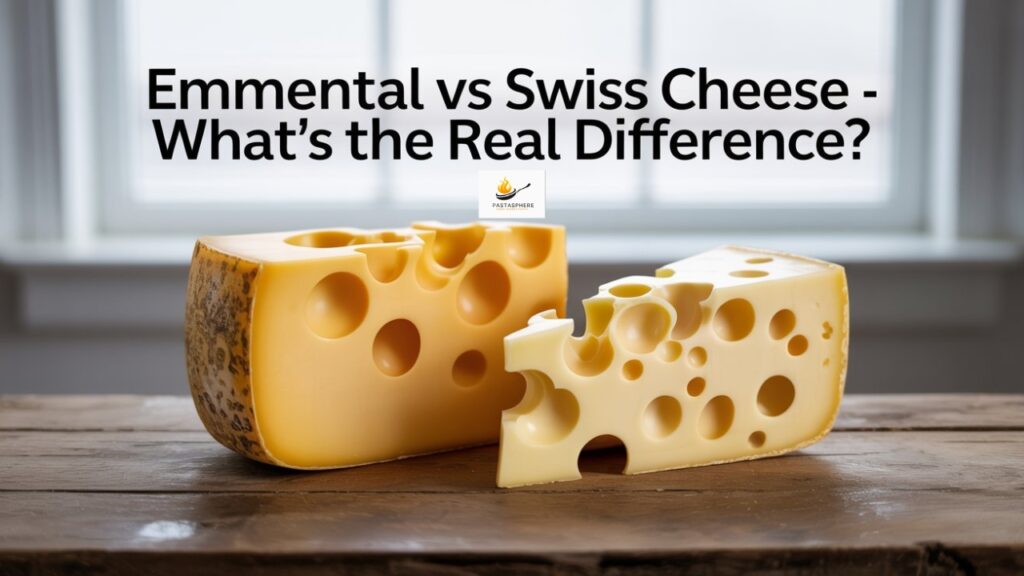
Many people think Emmental and Swiss cheese (U.S. version) are the same, but they’re not. Emmental comes from Switzerland and is made using traditional methods. It’s aged longer, has a nutty and rich flavor, and is often made with raw milk. It also has big holes and a firm texture.
In the U.S., “Swiss cheese” is usually a milder, processed version of Emmental. It’s made in factories, often with pasteurized milk, and doesn’t have the same strong flavor or aging.
Here’s a quick comparison:
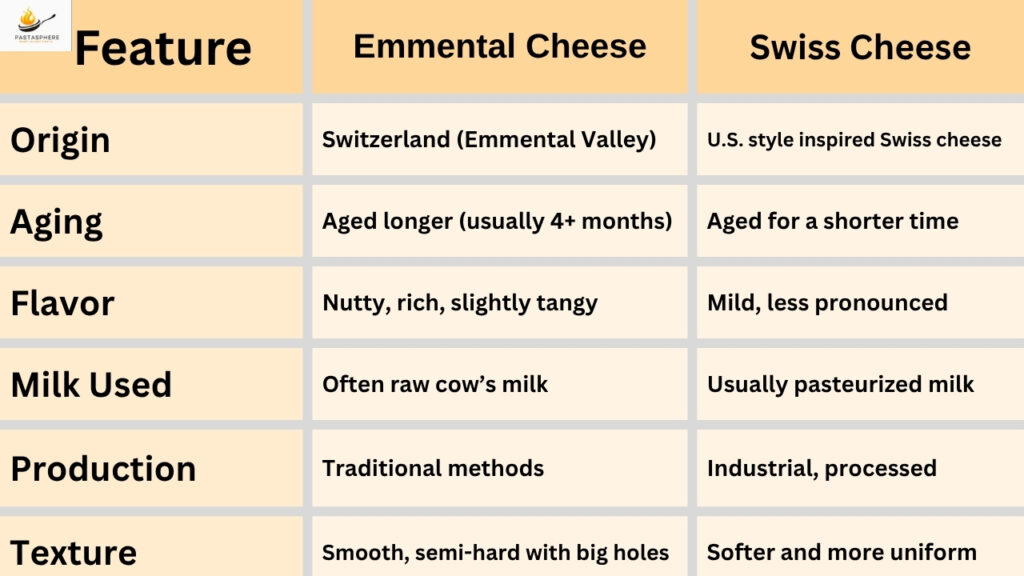
So, now that we know what makes Emmental special, let’s look at the best Emmental cheese substitutes and when to use each one.
Choosing the Right Substitute for Your Recipe
Let’s now break it down by use case. This way, you’ll know which cheese works best in what recipe.
For Melting in Sandwiches and Burgers
- Best picks: Gruyère, Jarlsberg, Raclette
For Grating Over Pasta or Casseroles
- Go for: Parmesan, Comté, Fontina
For Cheese Platters and Snacks
- Use: Gouda, Jarlsberg, Edam
Flavor vs Texture: What Matters Most?
This is a personal decision. Ask yourself: Do you need flavor or melting ability?
- If flavor is key: Gruyère, Comté, or Parmesan
- If texture matters more: Mozzarella, Havarti, or Fontina
- Want both? Combine two cheeses to balance taste and consistency.
FAQs About Emmental Cheese Substitutes
1. Can I Use Cheddar Instead of Emmental?
Yes, you can, but Cheddar has a sharper, tangier taste. It doesn’t melt as smoothly as Emmental. It’s fine for sandwiches but not the best for fondue or delicate recipes.
2. What’s the Best Emmental Replacement in Fondue?
Gruyère is the top choice due to its similar melt and nutty flavor. Mixing it with Fontina or Comté adds extra richness. These cheeses blend smoothly for a classic fondue texture.
3. Are There Non-Dairy Alternatives with Similar Texture?
Yes, look for Swiss-style vegan cheeses made from coconut oil or nuts. They often mimic the firm, semi-hard texture. Some melt fairly well in warm dishes like grilled cheese.
4. Which Substitute Works Best for Grating on Pasta?
Parmesan or Comté are excellent for grating over pasta. They offer strong, nutty flavors and don’t overpower the dish. Fontina also works if you prefer a milder touch.
5. Can I Use Mozzarella Instead of Emmental in Cooking?
You can, but Mozzarella is very mild and doesn’t match Emmental’s flavor. It melts well but lacks the nutty depth. Best used when texture matters more than taste.
Wrapping Up
By now, you’ve seen that there’s no need to panic when you’re out of Emmental cheese. Whether your recipe needs a creamy melt, a rich nutty flavor, or a vegan twist, there’s a perfect match waiting in your fridge or at the store.
From Gruyère to Fontina, Comté to Jarlsberg, each are great emmental cheese substitutes offers its own strengths depending on the dish. So next time you’re cooking and Emmental isn’t available, you can confidently choose a replacement that keeps your dish just as satisfying and delicious.




